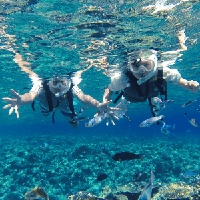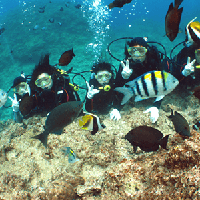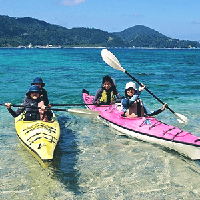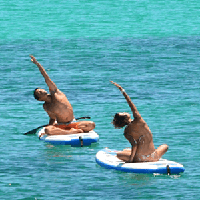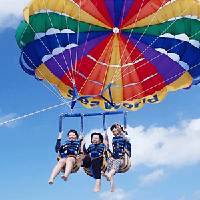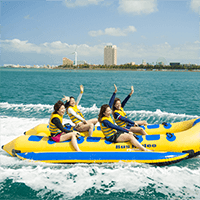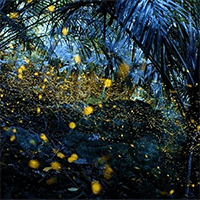Kansai in Guided tour
- Age 1~Age 70
- Over 6 hours on the day
- 10:30 / 11:30
Winter time: 10/16~5/14Summer time: 5/15~10/15~Schedule for the day~Winter time: 10:30 ▼Meet at Nihonbashi Exit 2 12:00 ▼Kobe Port/Mosaic Ferris Wheel (free time to explore/lunch on your own/approx. 2.5 hours) 14:30 ▼Kitano Foreigners' Houses (approx. 1 hour) 16:30 ▼Arima Onsen (free time to explore/approx. 1.5 hours) 18:00 ▼Mt. Rokko/night view (approx. 1.5 hours) 19:30 ▼Tour ends. 20:30 ▼Disband at Nihonbashi Exit 2Summer time: 11:30 ▼Meet at Nihonbashi Exit 21:30 ▼Kobe Port, Mosaic Ferris Wheel (free time, lunch on your own/approx. 2.5 hours)20:30 ▼Kitano Ijinkan-gai (approx. 1 hour)21:30 ▼Arima Onsen (free time, approx. 1.5 hours)20:30 ▼End of tour. 21:30 ▼Disband at Nihonbashi Exit 2▼Night view of Mt. RokkoMt. Rokko is near Kobe. The mountainous area is designated as Setonaikai National Park. It is a great place to enjoy the night view of Kobe, and is said to be one of the three best night views in Japan. ▼Recommended games:▼Kazamidori House (Admission fee: 500 yen, Combined ticket with Moegisha: 650 yen) Kazamidori House is the symbol of Kitano Ijinkan and is designated as an Important Cultural Property of Japan. In addition to its stable and stately architectural features, the internal structure is also worth seeing. The architect incorporated early 20th century Art Nouveau elements, making the whole house very luxurious, elegant, lively and comfortable. ▼Moegikan (Self-paid admission ticket 350 yen, Combined ticket with Kazamidori House 650 yen) Moegikan was the private residence of Hunter Sharp, the American Consul General in Kobe during the Meiji period. Moegi was named after the color of the exterior walls. The walls of each room are painted in a different color, and the fireplaces are also different colors, which is very impressive. It is designated as an Important Cultural Property. From the second floor of Moegikan, you can see the beautiful cityscape of Kobe. ▼ Gyorin-no-Yakata (Admission fee: 1,050 yen, actual cost) This is the first foreign-style house to open in Kobe, and was named after the natural stone slabs covering the exterior walls, which look similar to fish scales. It is designated as a registered tangible cultural property of the country and has been selected as one of the "100 Best Houses in Hyogo." This is a mixed tour, and participants come from all over the world.
- Age 1~Age 70
- Over 6 hours on the day
- 07:20
Schedule for the day: [07:20] Meet at Nihonbashi Exit 2 [09:50] ▼Ine Funaya ~ "The Venice of Japan" "The most beautiful village by the sea" ~ |Ine Town |Funaya Hiyori | INE COFFEE (approx. 40 minutes, walk or ride, ride fare at own expense) [11:10] ▼One of Japan's Three Most Scenic Views, "Amanohashidate Observatory" |Chion-ji Temple / Monjudo Hall (a temple for praying for academic success) |Walking and playing in the sea (approx. 2 hours including lunch, expenses at own expense) [14:40] ▼Kyoto Gassho Village ~ Miyama Kayabuki-no-Sato (approx. 40 minutes, free time) |Let's go to the most beautiful photo spot - the little red post box |Miyama Milk and Miyama Ice Cream are must-try in Miyama [15:20] After a fun day's tour, we headed home. [17:20] Shinsaibashi/Dotonbori Area (about 1 hour, free time) ▼ Funaya Days: Funaya Days is a niche tourist spot in Ine that has been featured in lifestyle magazines recently. Locals with high ideals have been working hard to create a tourist exchange facility where anyone can stop by and enjoy the beautiful scenery of Ine. There are facilities such as an information center, restaurant, and cafe. "Hiyori" means sunny and good weather in Japanese. The sight of the seawater sparkling in the sunlight is the most ideal expression of "Funaya Weather". There is also a boathouse that you can visit. ▼ INE COFFEE: is a Japanese modern design with a focus on simple and clean style. The seaside coffee shop is very attractive, with colorful pillows, and sitting here and looking at the sea is a completely relaxing and healing atmosphere. However, the best view here is from the corner on the first floor. The floor-to-ceiling windows overlook Ine Bay. It's a wonderful view. The "INE CAFE" logo is placed on the table, and two heart-shaped sunglasses are placed on the chair. The cafe basically provides a special area for taking photos and checking in, which is amazing. The beautiful view from the floor-to-ceiling windows is like a postcard, and it makes you feel like time has stopped. You should also visit the unique boathouse - the first floor is a cabin, and the second floor is a private home. This unique structure is a "funaya", a feature unique to Ine Town. This tour is a mixed tour, and participants come from all over the world.
- Age 20~Age 99
- 2~3 hours /3~4 hours
- 13:00
Blessed with an abundance of underground water veins that spring up from the Momoyama Hills, Fushimi was once called "Fushimizu" (literally "fushimizu" in Japanese), and it is said that full-scale brewing began here about 400 years ago because the water was suitable for sake brewing. It flourished as a castle town and a port on the Yodo River on the Tokaido, and sake breweries with white walls stand out along the Uji River and canals. The streets of Fushimi, where you can enjoy the atmosphere of a sake brewing town, with ten-koku boats sailing among swaying willows, have been designated as the "Fushimi Minamihama Neighborhood Landscape Development District" by Kyoto City. ~Time Schedule~13:00 [Meet at the north ticket gate of Keihan Electric Railway Nakashojima Station] Meet in front of the sake barrel object located immediately after exiting the north ticket gate! This is where the tour begins! It's a flat road, but you'll be walking about 2 kilometers, so please wear comfortable shoes on the day. 13:15 [Gekkeikan Okura Sake Museum] ☆Three types of sake tastings, including Daiginjo, and a special Gekkeikan sake cup included☆The building is a wooden storehouse built in the Meiji era that is still in use. You can drink the underground water used in sake brewing from the well in the courtyard. Just like Fushimi sake, it is very soft and delicious, so please try it. You will be surprised at how soft it is. In the exhibition room, you can see traditional sake brewing tools, which are designated as tangible folk cultural properties of Kyoto City. 13:50 [Fushimi Yume Hyakushu] ☆Winter limited sake ice cream included☆Shop & cafe "Fushimi Yume Hyakushu". In fact, this building is the former main store of Gekkeikan, built in the Taisho era. In addition to Gekkeikan, various Kyoto sakes and souvenirs are sold in the store. We have prepared a 3-type sake tasting set including appetizers here. 14:30 [Kizakura Kappa Country] ☆Kyoto's oldest local beer included☆ Kiizakura is famous for its sake commercials using kappa characters, but it is also the first company to make local beer in Kyoto. Therefore, in addition to the sake manufacturing process, Fushimizugura is characterized by the fact that you can tour the beer factory. After the tour, try tasting sake and beer in the lovely courtyard. 15:15 [Aburacho] ☆Authentic sake tasting set of three types☆ We have more than 80 types of sake from all 18 breweries in Fushimi, mainly ginjo sake and daiginjo sake, and more than 100 types including seasonal limited edition sake. In addition, at the sake tasting counter attached to the store, you can compare three types in small cup size as well as a glass. Just looking at the bottles will make you feel happy.
- Age 6~Age 100
- Within 1 hour
Elevator descends to the marine cavern spreading 36 meters underground. Please enjoy dynamic landscape, mystery of the thousand and history romance.
- Age 9~Age 70
- 3~4 hours
- 09:00 / 09:30 / 13:30 / 14:00
From the start to the finish, you will board a rubber boat through a vast natural ravine, and everyone will work together as a team to overcome this thrilling and thrilling course. In addition to rafting down torrents on a rubber boat, you can also dive into rocks about 3 meters high and swim in the river in gentle areas, which is why it has earned many reviews and reputations. . In order for beginners and those who are not good at swimming to participate with peace of mind, we have prepared a solid safety explanation from the instructor, safety equipment such as life jackets and helmets, and wetsuits that match the season. I'm here. All instructors have taken first aid courses and river rescue courses to prepare for an emergency accident. You can participate in the tour safely and securely. 30 minutes from Kyoto Station with excellent access from the Kansai area. By all means, please spend the most enjoyable holiday with easy Kyoto Hozu River rafting.
- Age 3~Age 80
- Over 6 hours on the day
- 08:00
07:50 Meet in front of Kani Douraku Dotonbori East Branch 08:00 Departure ↓ Kinkaku-ji Temple (approx. 40 minute stay) Admission ticket included ↓ Arashiyama (approx. 120 minute stay) ↓ Miyama Kayabuki-no-Sato (approx. 90 minute stay) ↓ Fushimi Inari Taisha Shrine (approx. 60 minute stay) ↓ Osaka Dotonbori (scheduled arrival around 19:30) *Due to weather or traffic congestion, the stay at the facilities may be shortened or the tour may be canceled.
- Age 1~Age 70
- Over 6 hours on the day
- 08:40 / 09:50
[07:30-08:30] Hotel transfer within the Osaka Loop Line [08:40] Boarding and disembarking at the meeting point, Nihonbashi Station Exit 2 (Namba-Shinsaibashi area) [09:50] Boarding and disembarking at the meeting point, Kyoto Station Hachijo Exit (in front of Seven-Eleven) [10:50] ▼Miho Museum: Pei's Paradise (about 2 hours, free time including lunch, at own expense) (Closed: March 24th, 31st, 2025, April 7th, 14th, 21st, 28th, May 7th, 12th, 19th, 26th, June 2nd, June 9th - July 11th, July 14th, 22nd, 28th, August 4th, 12th, 18th, August 25th - September 19th, September 22nd, 29th, October 6th, 14th, 20th, 27th, November 4th, 10th, 17th, 25th, December 8th, December 15th - 31st) Opening days: Omihachiman Hachimanbori, not Miho Museum ▼Omihachiman Hachimanbori Experience traditional Japanese architecture along the moat A canal tour with atmosphere and history (about 2 hours, including lunch and free time)Miho Museum is closed. Instead of Miho Museum, we will go to Omihachiman Hachimanbori. [13:50] ▼Kyu-Chikurin-in - Reflection like Ruriko-in (about 60 minutes)|▼Hieizan Hiyoshi Taisha - Head shrine of more than 3,800 Hie Shrines, Hiyoshi Shrines, and Sanno Shrines throughout Japan. Monkeys are messengers of the gods. (Approximately 60 minutes, go when the old bamboo forest is closed. Do not enter the old bamboo forest)|Sanno Torii [15:20] ▼Lake Biwa - Shirahige Shrine - Torii in the lake (about 30 minutes) [16:00] ▼After a fun day of sightseeing, we start to head back. [19:00] ▼Shinsaibashi, Dotonbori area (free time / about 1 hour)Guests can play in the Shinsaibashi area of Osaka for about 1 hour. After you're done playing, passengers who have chosen to board and disembark at the meeting point will disband in the Shinsaibashi area. ▼For opening days, please check the Miho Museum official website: http://www.miho.or.jp/calendar/ Permanent exhibition admission fee: 1,100 yen, special exhibition admission ticket: 1,300 yen ▼Ancient bamboo forest admission fee: 330 yen Tasting matcha and Japanese sweets in the garden: 400 yen Closed: Mondays (closed on public holidays), the day after public holidays, December 26th to 31st The Japan tour is a mixed tour, and participants come from all over the world.
- Age 1~Age 70
- Over 6 hours on the day
- 10:30 / 11:30
Winter time: 10/16-5/14Summer time: 5/15-10/15~Schedule for the day~Winter time: 09:30-10:30 ▼Pick up/drop off/transfer from hotel/B&B 12:00 ▼Kobe Port/Mosaic Ferris Wheel (free stroll/lunch on your own/approx. 2.5 hours) 14:30 ▼Kitano Foreigners' Houses (approx. 1 hour) 16:30 ▼Arima Hot Springs (free stroll/approx. 1.5 hours) 18:00 ▼Mt. Rokko/night view (approx. 1.5 hours) 19:30 ▼Tour ends. 20:30 ▼Pick up/drop off/transfer to hotel/private innSummer time: 10:30-11:30 ▼Pick up/drop off/transfer to hotel/private inn13:00 ▼Mosaic Ferris Wheel at Kobe Port (free time to explore/lunch on your own/approx. 2.5 hours)15:30 ▼Kitano Ijinkan-gai (approx. 1 hour)17:30 ▼Arima Onsen (free time to explore/approx. 1.5 hours)19:00 ▼Night view of Mt. Rokko (approx. 1.5 hours)20:30 ▼Tour ends. 21:30 ▼Pick up/drop off/transfer to hotel/private inn▼Night view of Mt. RokkoMt. Rokko is located near Kobe. The mountainous area is designated as Setonaikai National Park. It is a great place to enjoy the night view of Kobe, and is said to be one of the three best night views in Japan. ▼Recommended games:▼Kazamidori House (Admission fee: 500 yen, Combined ticket with Moegisha: 650 yen) Kazamidori House is the symbol of Kitano Ijinkan and is designated as an Important Cultural Property of Japan. In addition to its stable and stately architectural features, the internal structure is also worth seeing. The architect incorporated early 20th century Art Nouveau elements, making the whole house very luxurious, elegant, lively and comfortable. ▼Moegikan (Self-paid admission ticket 350 yen, Combined ticket with Kazamidori House 650 yen) Moegikan was the private residence of Hunter Sharp, the American Consul General in Kobe during the Meiji period. Moegi was named after the color of the exterior walls. The walls of each room are painted in a different color, and the fireplaces are also different colors, which is very impressive. It is designated as an Important Cultural Property. From the second floor of Moegikan, you can see the beautiful cityscape of Kobe. ▼ Gyorin-no-Yakata (Admission fee: 1,050 yen, actual cost) This is the first foreign-style house to open in Kobe, and was named after the natural stone slabs covering the exterior walls, which look similar to fish scales. It is designated as a registered tangible cultural property of the country and has been selected as one of the "100 Best Houses in Hyogo." This is a mixed tour, and participants come from all over the world.
- Age 1~Age 70
- Over 6 hours on the day
- 07:30
[07:30-08:30] Pick-up/drop-off/transfer to hotel/private inn Hotels/private inns within the Osaka Loop Line [10:00] ▼Kiyomizu-dera area (individual worship, free stroll, free lunch/approx. 3 hours) [13:30] ▼Fushimi Inari Taisha (individual worship, free stroll/approx. 70 minutes) [15:30] ▼Nara Park (individual worship, free stroll/approx. 1.5 hours) [17:00] ▼After a fun day of sightseeing, start heading back. [18:00] ▼Pick-up/drop-off/transfer to hotel/private inn. Recommended sightseeing courses for hotels and guesthouses within the Osaka Loop Line Course 1: Kiyomizu-dera Temple (Customers are responsible for admission fees.) - Ni, Sannenzaka - Ishibekoji - Gion · Hanamikoji-dori - Yasaka Shrine You can visit your favorite spots according to your physical strength and time ~ Course 2: Kimono experience (Customers who are interested can wear a kimono and enjoy the old townscape and tour Kiyomizu-dera Temple. Let's take pictures of the wonderful moment.) (There are many kimono shops near Kiyomizu-dera Temple and Fushimi Inari Taisha Shrine. We recommend renting a kimono at a shop in Kiyomizu-dera Temple and returning it at a shop in Fushimi Inari Taisha Shrine. Fees are borne by the customer.) Course 3: "Nara Park" where "deer and autumn leaves" are woven together The contrast between the autumn leaves and evergreen trees is vivid Course 4: Todai-ji Temple (Customers are responsible for admission fees.) Todai-ji Temple was built during the Nara period. Nara is popular with tourists and once served as the capital of Japan. It is registered as a UNESCO World Heritage Site as one of the "Historic Monuments of Ancient Nara". Todaiji Temple has eight national treasure buildings, 14 buildings (24 national treasure Buddha statues), and nine other national treasures such as paintings and books. The famous Great Buddha, the Great South Gate, and the Kongorikishi standing statues are all national treasures, as are the Hokke-do Hall, the buildings, and the Buddha statues enshrined within. There are few places in Japan where you can see so many national treasures at once. Admission fees: Todaiji Great Buddha Hall: Adults (junior high school students and above) 600 yen, elementary school students 300 yen; Great Buddha Hall and Todaiji Museum: Adults (junior high school students and above) 1000 yen, elementary school students 400 yenThis is a mixed tour, and participants will come from all over the world.
- Age 1~Age 70
- Over 6 hours on the day
- 08:40 / 09:50
[08:40] Exit 2 of Nihonbashi (towards Namba-Shinsaibashi) [09:50] Kyoto Station Hachijo Exit, sightseeing bus parking lot [10:30] ▼ Sanzenin Temple (approx. 120 minutes, free time, including lunch, please pay your own expenses) [13:30] ▼ Arashiyama (approx. 3 hours, free time) [16:30] We finished our day's tour with a lot of fun and headed home. [17:50] Shinsaibashi/Dotonbori area (approx. 1 hour, free time) Recommended restaurants near Sanzenin Temple: Keibisakan mainly serves soba, tofu dishes, and creative cuisine. Ippukuchaya Main menu: Udon, soba, bowls Ryokawachaya Main menu: Udon, yuba dishes Shinomatsumon mainly serves Kyoto cuisine, tofu dishes, and yuba dishes. Recommended route in Arashiyama (at your own expense. We recommend you choose a tour)1. Sagano train (recommended route: Sagano - Kameoka Station - Sagano)Travel period: March 1st to December 29th (trains do not operate in January and February due to winter maintenance)Closed: Wednesdays (train ticket price is not included, must be purchased separately)Cherry blossom season and autumn leaves season (Arashiyama train, operation date undecided) 1 train 30 seats2. Sagano Bamboo Forest PathSagano Bamboo Forest is located in Arashiyama. The bamboo forest path is about 500 meters long. Pass Nonomiya Shrine and head towards Okawachi Sanso to reach the Arashiyama Bamboo Forest. Walking through the bamboo forest, you can hear the natural sound of the wind blowing through the bamboo leaves. This sound has also been selected as one of the "100 Sounds of Japan that Should Be Preserved". This is also where Ang Lee shot Crouching Tiger, Hidden Dragon. Tenryu-ji Temple on the trail offers a spectacular view of a Japanese garden. The Arashiyama Lantern Festival, held every December, illuminates the bamboo forest and Togetsukyo Bridge with dazzling lights, creating a wintery sight. This is a shared tour, and participants come from all over the world.
- Age 1~Age 70
- Over 6 hours on the day
- 08:40 / 09:50
[08:40] ▼Nihonbashi Station, Exit 2 (Namba-Shinsaibashi area) [09:50] ▼Kyoto Station, Hachijo Exit (in front of 7-Eleven) [10:00] ▼Kiyomizu-dera area (individuals can visit the shrine, stroll around freely, and have lunch at their leisure / approx. 3 hours) [13:30] ▼Fushimi Inari Taisha Shrine (individuals can visit the shrine, stroll around freely / approx. 70 minutes) [15:30] ▼Nara Park (individuals can visit the shrine, stroll around freely / approx. 1.5 hours) [17:00] ▼After a fun day's sightseeing, we start to head back. [18:00] ▼Shinsaibashi, Dotonbori area (free time/about 1 hour) Recommended sightseeing course Course 1: Kiyomizu-dera Temple (customer pays admission fee) -Ninen-zaka -Ishibekoji -Gion·Hanamikoji-dori -Yasaka Shrine You can visit your favorite spots according to your physical strength and time~Course 2: Kimono experience (Customers who are interested can wear a kimono and enjoy the old townscape and touring Kiyomizu-dera Temple. Let's take pictures of the wonderful moment.) (There are many kimono shops near Kiyomizu-dera Temple and Fushimi Inari Taisha Shrine. We recommend renting a kimono at a shop in Kiyomizu-dera Temple and returning it at a shop in Fushimi Inari Taisha Shrine. Customers are responsible for the fee.) Course 3: "Nara Park" where "deer and autumn leaves" are woven together The contrast between the autumn leaves and evergreen trees is vivid Course 4: Todai-ji Temple (customer pays admission fee) Todai-ji Temple was built in the Nara period. Nara is popular with tourists and once served as the capital of Japan. It is registered as a UNESCO World Heritage Site as one of the "Historic Monuments of Ancient Nara". Todaiji Temple has eight national treasure buildings, 14 buildings with 24 national treasure Buddhas, and nine other national treasures such as paintings and books. The famous Great Buddha, the Great South Gate, the Kongorikishi standing statues, and the Hokke-do Hall, as well as the Buddha statues enshrined therein, are all national treasures. There are few places in Japan where you can see so many national treasures at once. Admission fees: Todaiji Great Buddha Hall: Adults (junior high school students and above) 600 yen, elementary school students 300 yen; Great Buddha Hall and Todaiji Museum: Adults (junior high school students and above) 1000 yen, elementary school students 400 yen This is a mixed tour, and participants will come from all over the world.
- Age 0~Age 100
- 1~2 hours
- 07:00 / 08:00 / 09:00 / 10:00 / 11:00 / 12:00
Katsuura was once a bustling town with tuna boats coming and going and a tourism boom in the Showa era. On this tour, you will walk with a local guide, tracing the town's story that has continued since the early Showa era. Why not visit the guide's favorite delicious restaurants and get a feel for the daily life we live in this town today through interactions with the locals? The charm of Katsuura can only be seen by touring with a guide. Through this trip, we will share the town's story and provide you with a special experience that will make you want to return.
- Age 6~Age 70
- 1~2 hours
- 11:00 / 14:00 / 17:00 / 20:00
Osaka no Jin ⚔ Pilgrimage to sacred places refers to the stages of battles such as the 1614 (Keicho 19) battle "Osaka Winter Jin" and the 1615 (Genna 1) restarted battle "Osaka Summer Jin" and other battles. It is to visit places connected to Osaka Castle as sacred places with “SAMURAI STYLE”. In addition, the term ``Japan's best soldier, who acted with great courage and speed'' in that battle was a name used to praise Sanada Nobushige (Yukimura), who was loyal to his lord, did not betray him even with money or territory, and was close to Tokugawa Ieyasu during the Summer Siege in Osaka. . Yukimura Sanada shined dazzlingly as a Sengoku military commander in the battle that concluded the Sengoku period. His vivid life still fascinates many people today, and let's make a pilgrimage to the sacred place of his glorious battle at Osaka, where he was praised as ``the greatest soldier in Japan.''
- Age 6~Age 70
- 1~2 hours
- 11:00 / 14:00 / 17:00 / 20:00
Osaka no Jin ⚔ Pilgrimage to sacred places refers to the stages of battles such as the 1614 (Keicho 19) battle "Osaka Winter Jin" and the 1615 (Genna 1) restarted battle "Osaka Summer Jin" and other battles. It is to visit places connected to Osaka Castle as sacred places with “SAMURAI STYLE”. In addition, the term ``Japan's best soldier, who acted with great courage and speed'' in that battle was a name used to praise Sanada Nobushige (Yukimura), who was loyal to his lord, did not betray him even with money or territory, and was close to Tokugawa Ieyasu during the Summer Siege in Osaka. . Yukimura Sanada shined dazzlingly as a Sengoku military commander in the battle that concluded the Sengoku period. His vivid life still fascinates many people today, and let's make a pilgrimage to the sacred place of his glorious battle at Osaka, where he was praised as ``the greatest soldier in Japan.''
- Age 18~Age 100
- 2~3 hours
This is a two-hour tour where you can sing and drink as much as you like at a karaoke bar. This tour takes you to a snack bar, which is a part of Japanese culture that many people would not be able to venture into during their travels, and allows you to sing karaoke as much as you like. Interacting with local customers is also one of the attractions of this tour. Let's enjoy this rainy day activity together in the spare time after outdoor sightseeing during the day. English is available, so you can participate with peace of mind. If you would like to experience a local meal before karaoke, we can accommodate you upon separate request.
- Age 5~Age 65
- 2~3 hours
- 09:30 / 13:30
In the hot season, head to a natural athletic course created by lava. Kannabe Highlands is home to Kannabe Volcano, the newest volcano in Kinki and the only one with a crater remaining. Trek through the river, using your whole body along the lava flow that was formed when lava solidified after it erupted about 25,000 years ago. Along the way, you can go close to a waterfall, grab onto rocks to move forward, feel the water pressure, and it's just like natural athletics! One of the things to enjoy is the outdoor break time, where you can relax in a secret place. *There are beginner to intermediate routes, so you can choose a course that suits the physical ability of the participants.
体力と運動神経には自信が無いけど、好奇心だけで本当に本当に楽しめました!超オススメです!大人も子どもも癒される事間違いなし。ムラーノさんが盛り上げてくださったので、冒険気分もぞんぶんに味わえました。念願の滝壺飛び込みも楽しかった~!また来たいです!!
- Age 10~Age 70
- 2~3 hours
- 10:00 / 14:00 / 17:00 / 20:00
One of them is Aoyamon. The gate in the square there is called Aoyamon.↓3-Gokurakubashi" as a bridge to the Paradise↓4-The place where Toyotomi Hideyori and Yododono took their lives During the Osaka Summer Battle, Toyotomi Hideyori, the lord of Osaka Castle, and his mother, Yodo-dono, committed suicide immediately after the castle fell.A monument that is believed to be the place of their suicide is located in this vicinity.↓5-Osaka Castle Main TowerOsaka Castle is the most difficult castle to attack, built by Toyotomi Hideyoshi, who aimed to unify the country.Note: Entry into the castle keep is not included.↓6-Japanese garden↓7-Sakuramon Gate↓8-South Outer Moat↓9-Hokoku ShrineThis shrine is located in front of Osaka Castle's Sakura Gate and is dedicated to Lord Toyotomi Hid↓-End point
- Age 13~Age 65
- 5~6 hours
- 09:30
This tour is an adventure tour that combines the mysterious world of Shugendo with the thrill of cave exploration. There are many caves and waterfalls in the Yoshino region of Nara Prefecture, and it has long been considered a sacred place for people who practice asceticism in the mountains. You can experience the beauty of nature and the depth of history by visiting the waterfalls and caves where ancient ascetics practiced. In particular, by exploring inside a cave, you can experience the sensation of entering the womb of the earth with all five senses, touch the mysteries of nature, and refresh your mind and body while being surrounded by a ``silent and mysterious'' atmosphere. **What is Shugendo? **Shugendo is a unique religious culture that incorporates elements of Buddhism and Shintoism into traditional Japanese ascetic practices, and values a sense of unity with nature. Mountains are considered sacred places, and asceticism is carried out in nature. Ascetics are called ``Yamabushi'' and aim for spiritual growth through meditation, waterfall training (asceticism where you are hit by a waterfall), asceticism in caves, etc. Shugendo, born from gratitude for being alive amidst the blessings of nature, is based on the idea that one can be reborn once again through rigorous training in nature. Caves have also been used as training sites. 1. **Arrival at Yoiyoi Nishikawa Base and Briefing**: - After arriving at Yoiyoi Nishikawa Base, you will receive a briefing on the tour overview, safety, and the cultural significance of the places you will visit. 2. **Introduction to Dragonfly Falls Hike**: - Visit Dragonfly Falls, which was also a training site for Shugendo, located a one-minute drive from Yoiyoi Nishikawa Base. Here, you will experience the training of Shugendo and how to face nature, including waterfalls. 3. **Lunch Break**: Have lunch at the park below Dragonfly Falls 4. **Preparing for Expedition**: - Return to Yoiyoi Nishikawa Base and prepare your exploration gear. Once you are ready, you will drive in your guide's car for about 15 minutes to the parking lot near the cave. 5. **Start of cave exploration**: - After arriving at the parking lot, the cave exploration will begin. The exploration begins by searching for the entrance of the cave. Please discover the cave with your own hands. In order to enjoy the cave exploration empty-handed, your luggage will be left in the car and your guide will take care of your valuables other than your smartphone. 6. **Cave exploration**:7. **Response after cave exploration**: - Return to the same parking lot and change from your dirty equipment. 8. **Hot spring bath**: - After the cave exploration, you can enjoy a hot spring bath. We will provide face towels. Please spend some time relaxing and soothing your tired body in the hot spring. 9. **Pick-up and disbandment**:
最近チェックしたプラン
Please wait a moment
![[Day trip] Kobe night view | Kobe Port Mosaic Ferris Wheel | Kitano Ijinkan District | Kitano Ijinkan Concept Store | Arima Onsen | Mt. Fuji Rokko night viewの画像](https://img.activityjapan.com/10/55503/10000005550301_P3BiVCAd_3.jpg?version=1744705983)
![[Amanohashidate] Amanohashidate | Amanohashidate Observatory | Ine Funaya | Miyama Gassho Village Thatched Roof Village Day Tour | Departing from Osakaの画像](https://img.activityjapan.com/10/56281/10000005628101_KGckTMmm_3.jpg?version=1730786645)
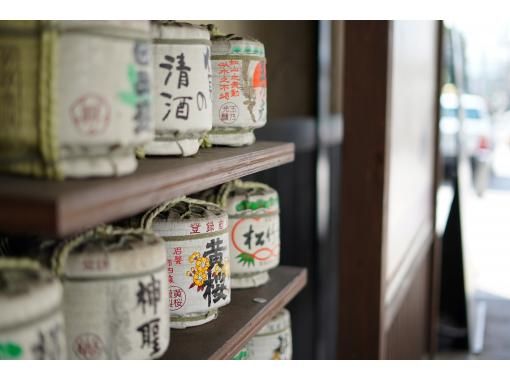
![[Wakayama/Shirahama] An experience where you can meet nature and history! A sea cave exploration tour that spreads 36 meters underground! !の画像](https://img.activityjapan.com/10/46749/10000004674901_1vsuVU1u_3.jpg?version=1676097908)
![Easy active experience! Hozugawa half-day rafting [near the station, with parking]. For families, friends and couples! Peace of mind with a big smile with 25 years of experience. Elementary school 3rd grade ~の画像](https://img.activityjapan.com/10/47017/10000004701701_atFOJjl6_3.png?version=1736818083)
![[Kyoto & Miyama Day Trip] Kinkakuji Temple, Arashiyama, Fushimi Area & Miyama Kayabuki Village Walk *Available in Japanese, English and Chinese (Departs daily from Osaka)の画像](https://img.activityjapan.com/10/57585/10000005758501_x1LWtdIV_3.jpg?version=1741247047)
![[Day trip/Pick-up from city hotels] Miho Museum | Omihachiman | Former Bamboo Forest Garden | Hieizan Hiyoshi Taisha Shrine | Lake Biwa | Water Torii of Shirasu Shrineの画像](https://img.activityjapan.com/10/55718/10000005571801_1dhWswak_3.jpg?version=1744171925)
![[Pick-up from city hotels] Kobe night view | Kobe Port Mosaic Ferris Wheel | Kitano Ijinkan District | Kitano Ijinkan Concept Store | Arima Onsen | Mt. Fuji Rokko night viewの画像](https://img.activityjapan.com/10/55624/10000005562401_P3BiVCAd_3.jpg?version=1735094942)
![[13-person team/Pick-up from city hotels] Kyoto, Nara, Kiyomizu-dera Temple, Kimono experience, Yasaka Shrine, Fushimi Inari Taisha Shrine, Nara Parkの画像](https://img.activityjapan.com/10/55578/10000005557801_P3BiVCAd_3.jpg?version=1722496202)
![[Day trip/Pick-up from city hotels] Kyoto, Arashiyama trolley train, Sanzen-in Templeの画像](https://img.activityjapan.com/10/55488/10000005548801_P3BiVCAd_3.jpg?version=1744016286)
![[Day Trip] Kyoto, Nara, Kiyomizu-dera Temple, Kimono Experience, Yasaka Shrine, Fushimi Inari Taisha Shrine, Nara Park, Todaiji Temple Day Trip (Departing from Osaka/Kyoto)の画像](https://img.activityjapan.com/10/55460/10000005546001_P3BiVCAd_3.jpg?version=1730786226)
![[Wakayama Prefecture, Nachikatsuura] Timeless Katsuura Town Walking Food Tour (Private Tour)の画像](https://img.activityjapan.com/10/58338/10000005833801_yNY2bOqK_3.jpg?version=1742283304)
![[Osaka/Tamatsukuri] Osaka no Jin "Hinomoto's No. 1 Soldier" pilgrimage tour guide (Tamatsukuri area)の画像](https://img.activityjapan.com/10/52625/10000005262501_xEnFGyJR_3.jpg?version=1706264164)
![[Osaka/Tennoji] Osaka no Jin "Hinomoto's No. 1 Soldier" pilgrimage tour guide (Tennoji area)の画像](https://img.activityjapan.com/10/52569/10000005256901_xEnFGyJR_3.jpg?version=1706258885)
![[Osaka・Osaka Castle] Night activities & Japanese culture Enjoy even on rainy days! 2 minutes from the station! Karaoke snack bar experienceの画像](https://img.activityjapan.com/10/57295/10000005729501_ntZ3nnUe_3.jpg?version=1735272304)
![[Hyogo, Tajima] The only place in the world! Lava flow rubber trekking with guide (half-day course) Beginner to intermediateの画像](https://img.activityjapan.com/10/6141/10000000614101_Po3gduS4_3.JPG?version=1721984944)
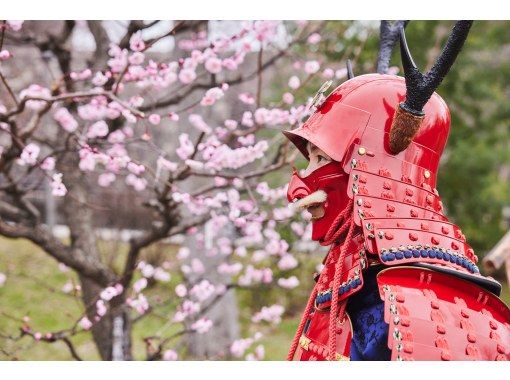
![[Nara, Yoshino] Cave Adventures: Discover the Mystical Paths of Shugenの画像](https://img.activityjapan.com/10/56866/10000005686601_8OUZBun9_3.JPG?version=1733231762)
